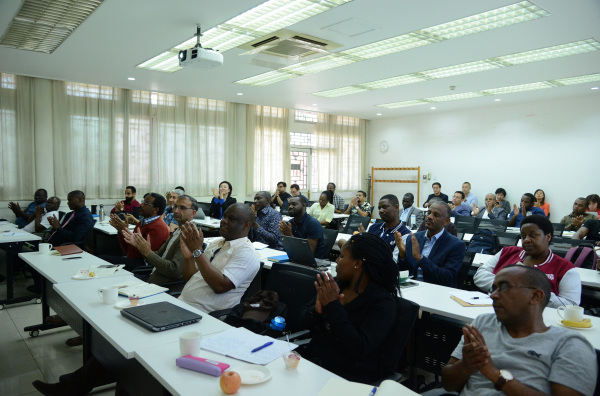
China's Approach to Poverty Reduction: Lessons Learned and Knowledge Sharing
By: P. Emmanuel Munyeneh (ISSCAD 2017 Doctoral Candidate)
Abstract:Since the end of War World II and the stratification of countries into developed and developing nations have still not changed some of the basic challenges for global equality. While poverty exists in all spheres, it was its prevalence that gave rise to countries being considered as developing or to a lesser extent Third World.
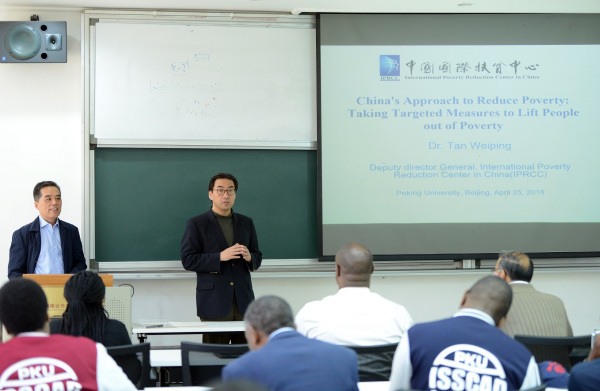
Left: Dr. Tan Weiping, Deputy Director IPRCC
Right: Prof. Fu Jun, Academic Dean of ISSCAD
After more than half a century, the eradication or alleviation of poverty is still a major dilemma for both worlds including international organizations. The adoption of the MDGs (2000) with its eight basic goals primarily focused on having most of the vices including poverty that threaten the human existence.Even so, the Agenda for Sustainable Development (2015) dubbed the SustainableDevelopment Goals with its 17 goals focuses on poverty reduction as the significant indicator for peace and improved living standard.
Different countries have adopted different approaches to poverty eradication including the Washington Consensus a keystone parameter. This article diverges fromWestern patterns and critically examine how China the largest developing country in the world developed its own strategies for poverty alleviation. The challenges and what lessons can be learned by other developing countries in the fight against poverty also form a part of this article.
The Institute of South-South Cooperation and Development (ISSCAD) at Peking University have on several occasions play hosts to international personalities including prime ministers, executives of leading international organizations, leading Chinese experts in several fields of academic excellence amongst others. In continuation of its seminar course on Inclusive Growth and Sustainable Development, ISSCAD on 25 April 2018, was honored to have one of China's leading experts in Poverty Reduction. As befitting the institute's tradition, Prof. Fu Jun, the Academic Dean of ISSCAD welcomed Dr. Tan Weiping and noted that the ISSCAD program was developed using four policy domain as integral parts of the learning process. He named growth and poverty alleviation, climate change and environment, population and health and education and innovation as the fundamental pillars of the program.
Professor Fu Jun reminded students that the SustainableDevelopment Goals (SDGs) has 17 goals with 169 indicators of poverty alleviation as the overarching objective. China he said represented one-fifth of the world's population; meaning that it is very important to look at its poverty indicators in spite of its remarkable achievements over the decades.
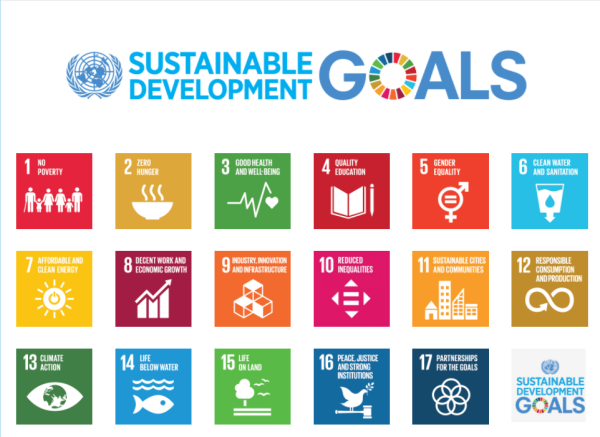
Source: https://www.un.org/sustainabledevelopment/
Speaking on the topic: “China's Approach to Reduce Poverty: TakingTargeted Measures to Lift People out of Poverty”, Dr. Tan Weiping, the Deputy Director of the International Poverty Reduction Center in China (IPRCC) catalogued his presentation into four major contexts: China's poverty reduction achievements, China’s proposal for poverty reduction, China’s poverty reduction experience, and China's approach to poverty reduction benefits people all over the world. Excerpts of the presentation, discussions and comparative analyses were captured below.
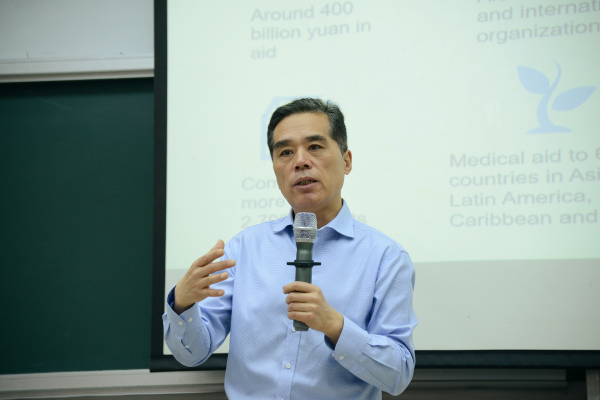
A latest World Bank estimate noted that in2013 10.7% of the world's population lived on less than US$1.90 a day as compared to the 12.4% in 2012. According to the report, in 1990, the number of people living on less than US$1.90 dropped from 1.85 billion to 767 million in 2013. When taking into account the movement of people out of extreme poverty since 2013, the number could be a bit lower than this.But not so fast as the reduction in the incidence of poverty was mainly driven by East Asia and the Pacific notablyChina, Indonesia, and India. China alone contributed 70% of poverty reduction across the world and 76% of the achievements made in the global poverty reduction in line with the Millennium Development Goals (2000-2015).
For Sub-Sahara Africa, the case is different as only 4 million people were moved out of extreme poverty with more than 389mpeople still living on less than US$1.90 a day as of 2013. Too sad for a continent endowed with so many natural resources.
In spite of being the second largest economy in the world characterized with sporadic manufacturing, infrastructure development and massive outburst in the area of science and innovation, the country is still grappling with the complexities of poverty. The intensity of the fight is manifested in the victory that has been won so far on the poverty reduction frontline. Since 1981, the country has managed to lift more than 850million people out of extreme poverty with less than 2% currently living in extreme poverty.
The country's proposal for poverty alleviation has been a fundamental component of the CPC long-range plan whether it was the Five-sphere Integrated Plan and the Four-Pronged ComprehensiveStrategy embedded in 18th CPC National Congress of 2012. The fight against alleviating poverty is both a national and a personal call.
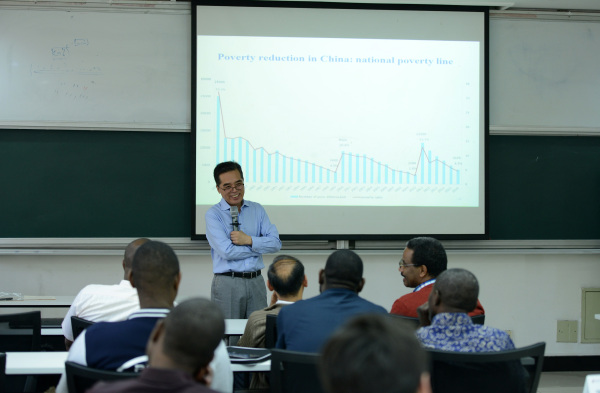
At the national level, the CPC developed four proposals for poverty reduction to include the setting up of clear targets, the development of a poverty database to trace the moving in and out of poverty, the implementation of targeted strategies and the establishment of institutional systems to coordinate and facilitate the fight against poverty.
At the19th CPC National Congress under the theme: "Remain true to ouroriginal aspiration and keep our mission firmly in mind, hold high the bannerof socialism with Chinese characteristics, secure a decisive victory inbuilding a moderately prosperous society in all respects, strive for the greatsuccess of socialism with Chinese characteristics for a new era, and worktirelessly to realize the Chinese Dream of national rejuvenation" President Xi Jinping noted that the countryhas made significant fight against poverty by removing more than 60 millionpeople out of poverty while the poverty head count ratio dropped from 10.2% toless than 4%.
Since 2017, employment has recorded steady growth with an average of 13 million new entrants in the labor market whereas growth in urban and rural personal incomes outpaced national economic growth with the middle-income group ever expanding. These remarkable economic growths according to the Chinese leader has been a direct result of the role of the state in economic development and poverty alleviation to include the construction of government-subsidized housing projects. The improvement of public health and medical services are all parts and parcel of the strategy to fight poverty.
Another effective comparative advantage that China has in the fight against poverty is its strong use of an online data system that disaggregates the level and ratio of poverty in each province. According to Dr. Weiping, the poverty registry system was able to track 128thousand villages, 290 thousand households and 90 million poor people in 2014alone. With this distributional statistic handy, the CPC and the government on average dispatched 3 officials to stay in each village for two to three years; teaching and training them on various methods in the fight against poverty. Witha slight difference, this is closely like the Peace Corps system which was established in 1961 by former US President John F. Kennedy.
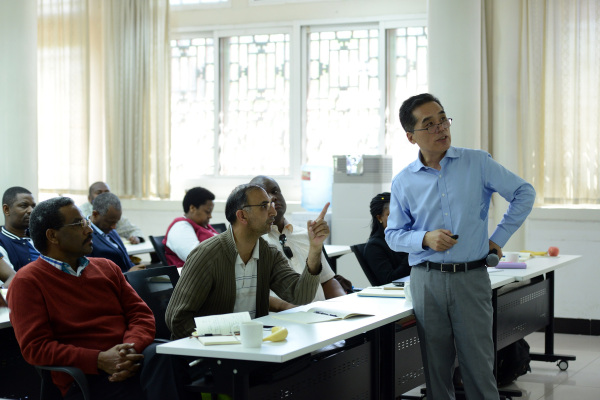
However, as it seems, the strategy is not without some hurdles in terms of implementation. One important factor to take note of is the issue of Eco-compensation; a situation in which villages or towns are forced to relocate due to the development and environmental problems.Once established that an area is economically valuable for development and that investment will pose an environmental risk, the next best option is the relocation of the indigenes. The process is not just a flat one. After establishing a suitable location, the next best thing for the government is to provide market opportunities for inhabitants such as the construction of factories. The relocation package also involves short and long-term training programs so that residents can fit into the market structure as well as a ten years education program to improve adult literacy. The training process is changed from agriculture to technical and vocational education so that inhabitants can fit into the urban workforce such as manufacturing, waitressing and other urbanized service.
Addressing the social aspect such as culture, religion, weather, and customs are some of the bottom necks in the process and must carefully be looked at in the decisions making process. Fortunately, more than 90% of the population belongs to the Han so religion is not a major challenge. Unlike other developing countries that rely on international organizations or friendly nations to assist in formulating policies that address poverty alleviation, China's approach is based on its national conditions, characterized by active explorations and extensive practices. For example, in Africa, the fight against poverty is both an initiative by domestic governments and the development partners. There are times that it is well coordinated and at other times, the governments and the donor community carry out the process separately. But such is not the case for China. The fight against poverty has a two-prong approach likewise but with different characteristics. The Chinese model includes the Party's leadership and the Government leadership with both institutions using a consolidated, cohesive, decisive and precise approach in the fight against poverty.
In short, Dr. Weiping noted that China's collective experience in the poverty reduction takes into consideration five approaches to include: a strategy of targeted poverty, increase financial-investment, generate the support and enthusiasm, buy-in and creativity of the poverty-stricken residents, the mobilization of social forces in the fight and the intensification of assessment and supervision to ensure consistency in the implementation process. But how does component two (the system of financial investment) work was the question posed to Dr. Weiping. In response, he noted that both the Central and Provincial governments have special funding for the process. The combined budgets for 2017 and 2018 stood at 200 and 300billion RMB respectively. Funds are disbursed either in the form of agriculture inputs such as machinery, seeds or fertilizers. In addition to the joint funding mechanism, there is also a provision for loans with low or no interest rate at all. In some cases, the government pays the interest rate on behalf of the company wanting to invest in any of the targeted poverty community.
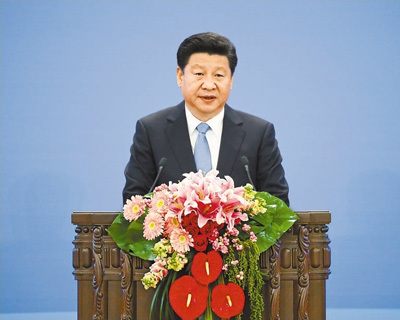
Source: http://cpc.people.com.cn/n/2015/1017/c64094-27709104.html
China's opening up and reform process was not only limited to its desire to ensure the manifestation of the China Dream but rather to share its experience and resources in assisting other developing countries in their fight against poverty through mutual respect and share prosperity. During his speech at the Global Poverty Reduction and Development Forum in Beijing China in October 2015, President Xi Jinping called on the international community to boost cooperation to jointly implement the 2030 Agenda for Sustainable Development so as to realize a win-win cooperation. His zeal to eradicate or reduce poverty is not focused on China alone but rather the world as a whole. Towards this end, China over the decade shave provided around 400 billion yuan in overseas development assistance to developing countries and has sent more than 600,000 aid workers to various countries. Additionally, the PRC has completed more than2,700 projects including the construction of hospitals, roads, and other needed infrastructure and has trained more than 12 million people from more than 60countries in various professions.
In spite of these poverty reduction strategies through overseas development assistance, there are still some lessons to be learned in the process. One classic example is the fact that some of these developmental projects do not have sustainability framework, that locals are not trained or trained effectively with the technical skills to manage or takeover project in the event of a problem or after the Chinese experts leave. Even at the medical levels, some have complained that in spite of building decent hospitals in and around Africa, the Chinese do not provide the necessary training for health workers to take over in the event that they are gone. If these statements are anything to go by, then China needs to firmly rethink its aid architecture to developing countries as without a sustainability plan Chinese taxpayers’ money could be wasted over-time.
But as China development plans, especially the fight against poverty is evolving and not carved in stones, the Deputy Director of the International Poverty Reduction Center in China, Dr. Weiping noted that such an issue is worthy of consideration when thinking about aid effectiveness and poverty reduction in developing country. And like noted earlier on, the fight against poverty is both a national and a personal call. During his speech to the 19thCongress of the CPC, President Xi noted that the wellbeing of the people is the fundamental goal of development hence the need to do more to improve their lives in the areas of social fairness and justice. Doing so require an intensified fight against poverty so that Chinese can have a greater sense of fulfillment as they contribute to, and gain from the development of their country.
President Xi himself had his share of working on poverty in the village of Liangjiahe, Shaanxi Province. During his seven years of work with rural peasants at the tender age of 16, the Chinese leader experiences firsthand poverty including extreme hunger which turned some of the villagers into beggars. It is with this deep sense of personal passion intensity and how poverty can threaten the human existence that has given rise to his zeal towards an all fight against poverty. As the clock tickles toward 2020, the world will be watching with anxiety and great expectations to see whether the world second largest economy will make poverty a thing of the past-the rejuvenation of the Chinese Dream.
